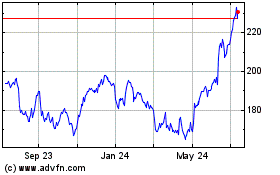Christopher Mims
On its face, a car seems like a disastrous thing for Apple Inc.
to build. Cars are a brutally commodified, terrifically expensive,
generally low-margin industry. Entering the car business is like
getting into a land war.
But the mounting evidence seems undeniable that Apple is forging
ahead anyway, despite lack of confirmation from the company.
Clearly, Apple thinks it has the chance to make a unique
contribution to a category chockablock with ho-hum user experiences
and barely differentiated models. Sort of like the phone industry
before Apple crashed the party.
No one knows what the company's internal logic is. But if you
spend time examining the industry, it becomes apparent that
transportation, more so than cars, is ripe for disruption in a way
that could give Apple an opening.
But reordering the status of a device as entrenched as an
automobile--tied up as it is with vast public spending, the direct
and indirect employment of tens of millions and layers of
politics--isn't something that happens overnight.
So here's my first prediction about the Apple car: If Apple does
go forward with it, the company is playing a long game, one that
could easily span decades.
Technology is set to radically transform everything from who
owns automobiles to how they work, and much of this change is
driven by the very mobile devices that are Apple's bread and
butter. If Apple is serious about maintaining its gargantuan size,
it needs to participate in this change, even if it's just at the
level of experimenting with how it can integrate its software and
hardware into the transportation system of the future. Even if, as
Apple has often said about its ventures into television, cars start
out as just a "hobby."
Take self-driving cars. There's plenty of evidence, from hiring
and patents to an open records request by U.K. newspaper the
Guardian, that Apple is at least thinking about building them.
Estimates for when self-driving technology will be ready for
widespread adoption range from the wildly optimistic-- five years,
according to the head of self-driving technology at Google Inc.--to
decades after, perhaps even somewhere beyond 2040.
That's an eternity in technology years. Plenty of time for Apple
to work out the advances in its mapping software and countless
other components that will be required to power the cars of the
future.
In the meantime, Apple has the resources--including enough
profit generated every 12 months to buy BMW AG for cash on the
barrel--to indulge its executives' very public love of cars. Jony
Ive, Apple's chief design officer, told the New Yorker that many
car designs leave something to be desired. Apple senior vice
president Eddy Cue is on the board of Ferrari, and Ive collaborator
Marc Newson has said that car design is currently "at the bottom of
a trough."
"I don't think Jony Ive or Tim Cook ponders the possible second
or third order effects for the auto industry," says Horace Dediu, a
fellow at the Clayton Christensen Institute for Disruptive
Innovation, a tech think tank. "They just say 'Cars suck, we can do
better, let's do it.' That's the artisan logic: 'We make great
things.'"
Given such a long time horizon, it's worth remembering that even
if Apple did release a car sooner rather than later--the company's
talks with BMW about BMW's production system suggest it is at least
possible--whatever it unveils should hardly be judged as the
exemplar of the company's efforts. If Apple is serious, there isn't
just one Apple car coming--there will be wave after wave, including
disjunctions in form and design as jarring as the shift from
desktop PCs to mobile devices.
Partly this is because transportation itself is rapidly
changing. As revealed by real-estate values in dense urban cores
and falling sales of cars among millennials, ours is an age in
which the real luxury is being able to not own a car at all.
If Apple really is looking at a 10-or even 20-year time horizon,
what place does an Apple car have in a future in which most of us
treat transportation as a service, like gas or electricity? In a
universe in which Uber Technologies Inc., with its potential fleets
of self-driving vehicles, is the public face of transportation and
Google the brains, Apple building a luxury vehicle is like some
company perfecting the world's best home dynamo right before
everyone's homes are connected to the electric grid.
The answer to this riddle requires some imagination, but here
goes: In a self-driving, vehicle-on-demand future, why build what
we think of as cars at all?
What if the same algorithms that route packets of data around
the Internet reveal that the most efficient size of people
transporters is some combination of self-driving buses, vans and
single or two-person vehicles, with only a smattering of cars
thrown in?
This is the vision embodied by, among others, Arcimoto, a
startup that will unveil its latest prototype of an all-electric
vehicle in October. The projected cost is $11,500, and while it
holds only two people, it shows how electric drivetrain technology,
and eventually, automated vehicles, can take any form we can
imagine, says President Mark Frohnmayer.
"Why do you use a vehicle capable of carrying five to seven
people hundreds of miles to drive alone to the grocery store 5
miles down the road?" says Mr. Frohnmayer.
So here's my second prediction about the Apple car: Who says
that, in its ultimate form, it will resemble a car at all?
Follow Christopher Mims on Twitter @Mims or write to
christopher.mims@wsj.com
Access Investor Kit for "Apple, Inc."
Visit
http://www.companyspotlight.com/partner?cp_code=P479&isin=US0378331005
Subscribe to WSJ: http://online.wsj.com?mod=djnwires
(END) Dow Jones Newswires
August 31, 2015 00:15 ET (04:15 GMT)
Copyright (c) 2015 Dow Jones & Company, Inc.
Apple (NASDAQ:AAPL)
Historical Stock Chart
From Mar 2024 to Apr 2024

Apple (NASDAQ:AAPL)
Historical Stock Chart
From Apr 2023 to Apr 2024
